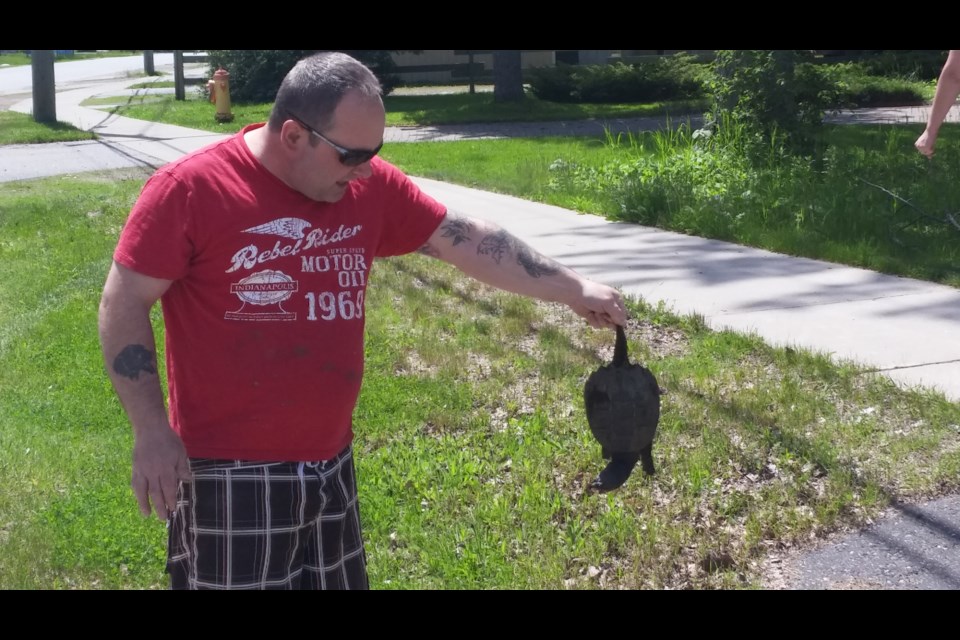A vehicle stopped with four-ways flashing. A concerned woman speaking frantically into a cell phone. Passersby gawking for a glimpse of the action.
Motor vehicle accident in North Bay? No, turtle crossing.
Brian Dwyer came across just such a scene on Premier Road Wednesday afternoon and his swift action saved what appeared to be a northern map turtle from certain death. After another good Samaritan had safely blocked the road, Dwyer grabbed the reptile by the tail and escorted her to the nearest stream across the road. The turtle curled her head, trying desperately to get a piece of Dwyer.
"That turtle was feisty," said Dwyer after the rescue. "I heard something about not touching them, but I did what I thought was right."
And right he was. "Spring is an important time to watch for turtles. If you can save one turtle by [safely] moving it off the road, that makes a big difference to the overall conservation of the species," said John Urquhart, a former conservation science manager for Ontario Nature, in an interview with Cottage Life.
"What humans have done through contributing to habitat loss, hunting, and poaching, is target adult turtles. That increased adult mortality is actually what’s driving the population down," explained Urquhart.
Only seven of every 10,000 snapping turtle eggs are living to adulthood, noted Urquhart, placing the species in the endangered category.
During the late May to early July nesting season, turtles inevitably cross roadways, leading to increased human interaction and a dangerous co-existence with man-made machines.
Tips for moving turtles out of harm's way:
- Do not get out of your car in high traffic or busy roadways. Animal control officers, conservationists, and law enforcement stress that your safety is paramount.
- If you choose to pull over and assist a turtle stranded on the road, common sense must prevail. When it is safe to do so put on your hazard lights and pull fully off the road.
- Enter the road to pick up small turtles only when the way is clear and it is safe. Pick up the turtle on either side of its shell behind the front legs or place one hand on top and the other underneath to move it. While it will still be able to kick at you, many turtles will just stay inside its shell while you move them off the road. Try to avoid moving turtles by the tail.
- Do not attempt to pick up snapping turtles, but rather move them along from behind with a dull object that will not harm the animal.
- Turtles must be allowed to proceed in the same direction they were heading in before you intervened.
- Do not take wildlife home as a pet.
If you come across a turtle in your travels, conservationists recommend taking a photo and uploading it to Ontario Nature's Reptiles and Amphibians Atlas. Mapping encounters with the species aids in conservation efforts, and to further protect turtles.



